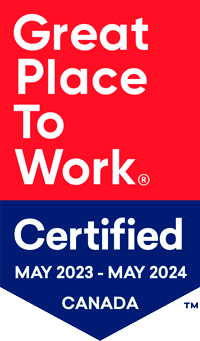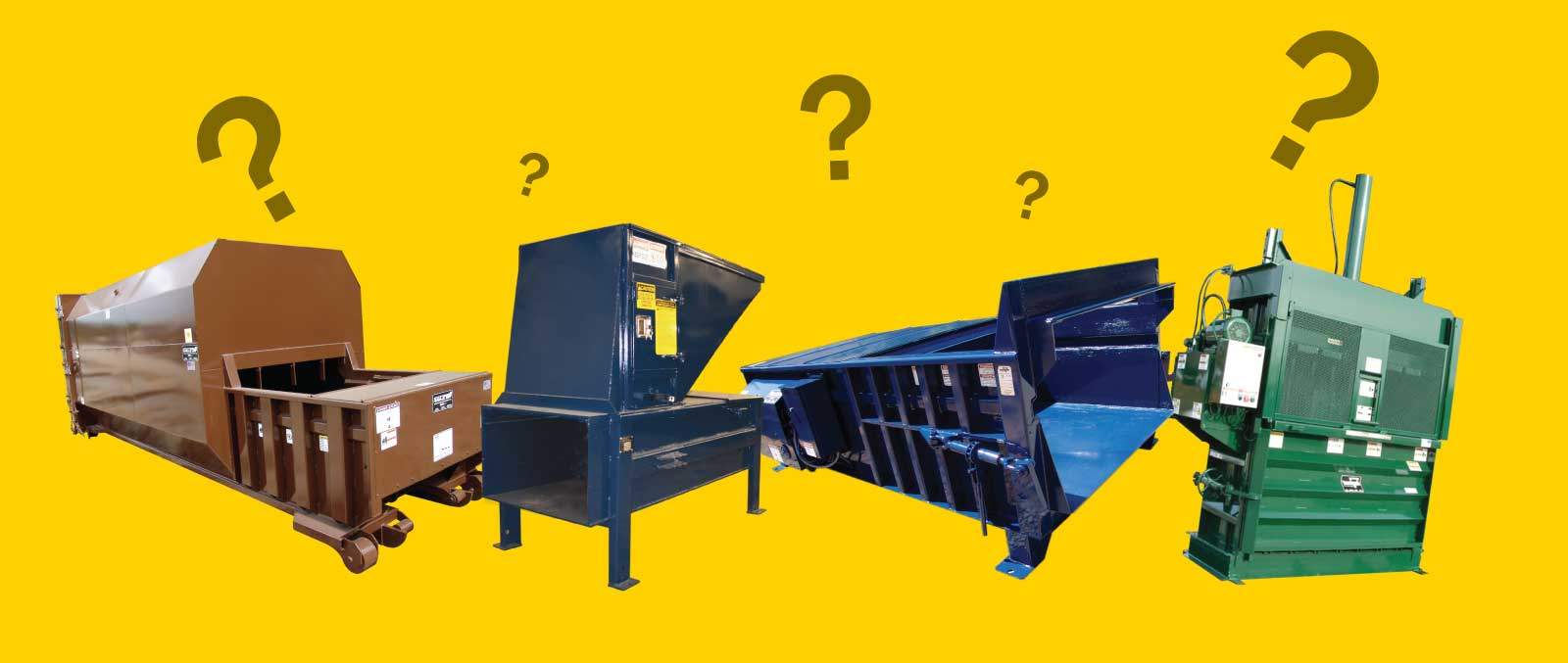The right waste and recycling equipment can result in higher efficiency, less downtime, less required manpower, and more savings. The guide below will help you identify such equipment for your specific situation.
The first thing to identify is the type and volume of waste that your organization produces. The kind of equipment you need for dry waste is different than that for wet waste. If you produce recyclable waste, then identifying whether it is just cardboard or mixed recycling will make a difference in your selection.
Wet waste that may leak calls for a self-contained compactor because it will help minimize odor, spills, and generally help you stay cleaner. A stationary compactor will be just fine for solid waste and in many cases, recyclables too. Some situations will call for a baler – such as a large volume of cardboard, tires, or metal waste.
The hourly, daily, or weekly volume of waste generated will determine how powerful your compactor needs to be, how large a container you require, and how much it will need to handle.
It’s important to consider that your equipment needs to handle the volume you produce at your busiest time – we don’t want your compactor to be overwhelmed when you need it most.Are you looking for a new installation to replace regular dumpsters or do you have an existing compactor?
If you already have a compactor, then by analyzing it our team can determine how to improve your operational efficiency and what equipment can get you there.On the other hand, if you are using dumpsters and now you’re considering getting a compactor then we can evaluate the volume of waste produced and calculate your potential ROI based on haulage costs, reduced volume, and other factors.
Using Smart Technology to Draw Maximum Benefits from Waste and Recycling Equipment
Smart technology can be your eyes and ears when it comes to waste and recycling equipment. Many compactors and balers aren’t checked often, so having 24/7 monitoring can bring huge improvements in efficiency and lower downtime. Monitoring equipment manually is unrealistic and will negate any benefits from doing so – that’s where technology comes in. By using a sophisticated system of sensors, smart technology can keep an eye on your compactor 24/7 and report it to the waste equipment management company that you work with.
Even when you do identify a malfunctioning compactor it isn’t always easy to detect what is wrong. Some smart systems can send alerts with specific codes that identify the type and origin of a malfunction to the service center. These alerts help the service dispatcher guide you through the repair process over the phone – minimizing the need for costly service calls.
Not all malfunctions can be fixed over the phone; and in many cases a technician needs to be dispatched. However, sometimes there is a quick fix, and smart technology can help you identify such instances.
What happens to your waste and recycling after it is compacted?
Depending on the frequency of your hauling service you may have to store two or more waste bins leading up to a pickup. If you’re using a separate machine to compact recyclables – such as a baler – then some of your stored waste could be picked up for free by a recycler. In the right situations adding a baler to your waste equipment will lead to overall savings and better organization. Achieving the right balance of bin size and pickup frequency is essential for optimizing costs.How Much Space Will You Need?
The space required for the entire waste compaction system is going to be more than just space for the compactor itself. Consider the entire process including the compactor, bins, feeding the compactor, and safe/easy access for staff.If there is a significant percentage of recyclable material and you could benefit from a baler, then it will need to be factored into the space equation.
Having enough room and the ability to move freely will first and foremost ensure safety for all involved. When dealing with heavy and powerful equipment such as a compactor or a baler, safety is paramount. Make sure that your current provider and/or service company take safety matters as seriously as you do, and have the right expertise on the topic. Metro Compactor is available to provide you with a second opinion if you’re concerned.
Below are 7 quick questions to get you started:
- What waste and recycling products are you generating? Write down all the types (cardboard, plastic, organic, etc.)
- How large is the typical piece entering the compactor?
- How much waste and/or recycling will need to be processed at the busiest time?
- What will be the maximum required waste volume per hour (at least approximate)
- How is waste and/or recycling placed in the compactor? Is it done manually, or via a conveyor?
- How much waste and/or recycling needs to be stored before pickups?
- What is the method of pickups; and what are the limitations in terms of weight and volume?
Once you have the answers to the above questions you can see which of our products will work for you. If you have an unusual setup or questions not covered in this guide, or if you’d rather talk to our experts right away, you can contact our sales team who’ll help you choose the right compactor and move to the next step.





Follow Us